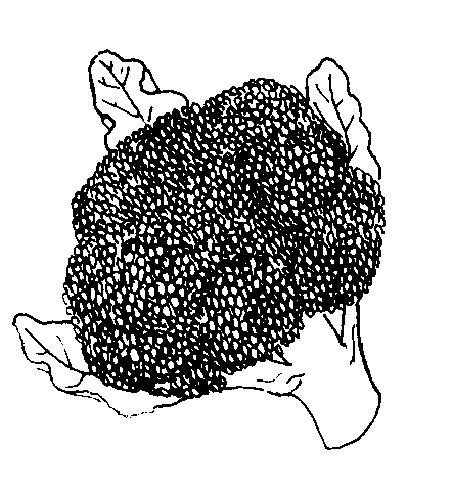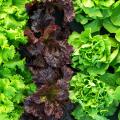Broccoli
Broccoli
Broccoli is one of the most nutritious of all vegetables. The edible parts are the compact clusters of unopened flower buds and the attached stems. Each plant produces one large central head and often several smaller side heads following harvest of the main head. This cool-season vegetable grows in all parts of Mississippi in spring and fall, but fall production often is more successful.

For spring broccoli, start plants in a cold frame 6 to 8 weeks before time for setting plants in the garden. This means starting in what seems mid-winter. Grow seedlings at cool temperatures and spaced at least one-half inch apart in rows 4 to 6 inches apart so they are hardy and able to withstand cold temperatures when transplanted.
Seedlings can be grown in individual cups or cells in plastic trays. Seedlings exposed to temperatures below 45 ºF for 2 weeks or more in plant beds may form small flower heads and be unproductive. Seedlings grown indoors, in a hot bed, or in a greenhouse often are killed by the first cold night after transplanting to the garden in early spring. Harden these seedlings for 1 to 2 weeks in a cold frame before setting them out. Use 1 cup of starter solution (page 9) for each plant when transplanting to the garden.
Side-dress broccoli plants with a nitrogen fertilizer as soon as they begin active growth after transplanting. A second side-dressing just before heading will help increase the size of the center heads.
For fall broccoli, plant seeds directly in the garden where they are to grow. Keep the seed bed moist to prevent crusting and to aid germination. Do not delay planting past recommended dates waiting for moisture or for temperatures to cool. If water is not available to keep the seed bed and seedlings moist, do not direct seed.
Fall broccoli is better in quality than spring broccoli because it matures as the weather is getting cooler rather than warmer, but fall broccoli has more insect problems than the spring crop. Control the major worm problems by spraying or dusting with a biological control containing Bacillus thuringiensis.
Harvest broccoli while the cluster of flower buds is still tight. Open yellow flowers indicate overmaturity. A hollow stalk may indicate a shortage of boron in the garden soil. Dissolve 1 tablespoon of household borax in 3 gallons of water and apply it to 100 feet of garden row. Use less borax for shorter row lengths. Using more than is recommended can be toxic to plants.
Varieties
- Green Comet—hybrid; extra early; medium-sized, 6- to 7-inch uniform heads; large side shoots; 61 to 75 days; AAS 1969.
- Packman—hybrid; very early; compact plant with large, flattened head; 62 days.
- Premium Crop—hybrid; midseason; medium large, 7- to 8-inch head; minimum of side shoots; 75 to 89 days; AAS 1975.
Publications
News
Vegetable producers across the Southeast are invited to the 2025 Vegetable Field Day on July 23 at the Mississippi State University station in Verona, Mississippi.
If you grow your own vegetables, you will likely see at least a few pesky insects that want to feed on your plants. Slugs are one of the pests you may be noticing now.
Did you know yellow squash is in the pumpkin family and are 95 percent water?




